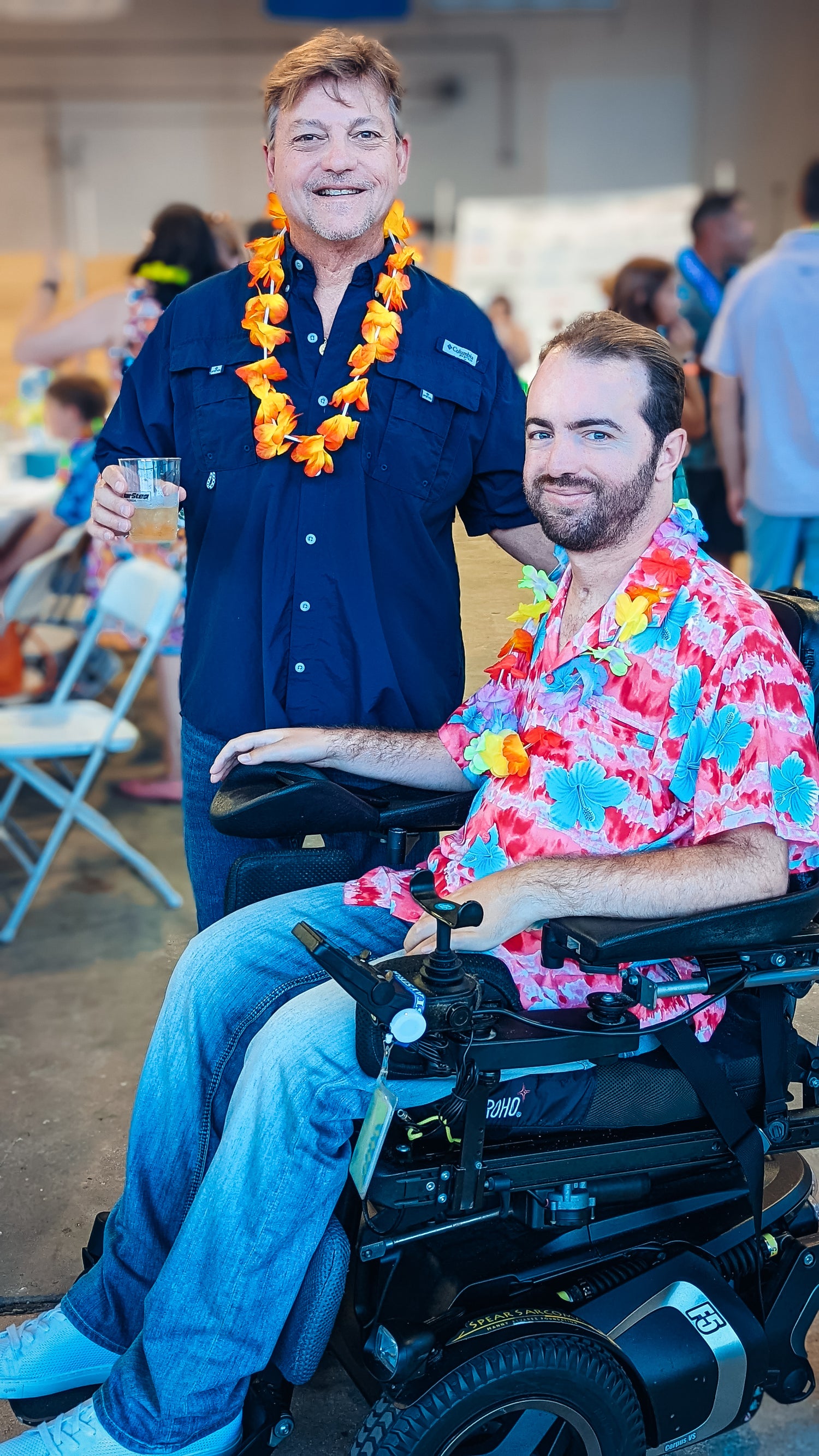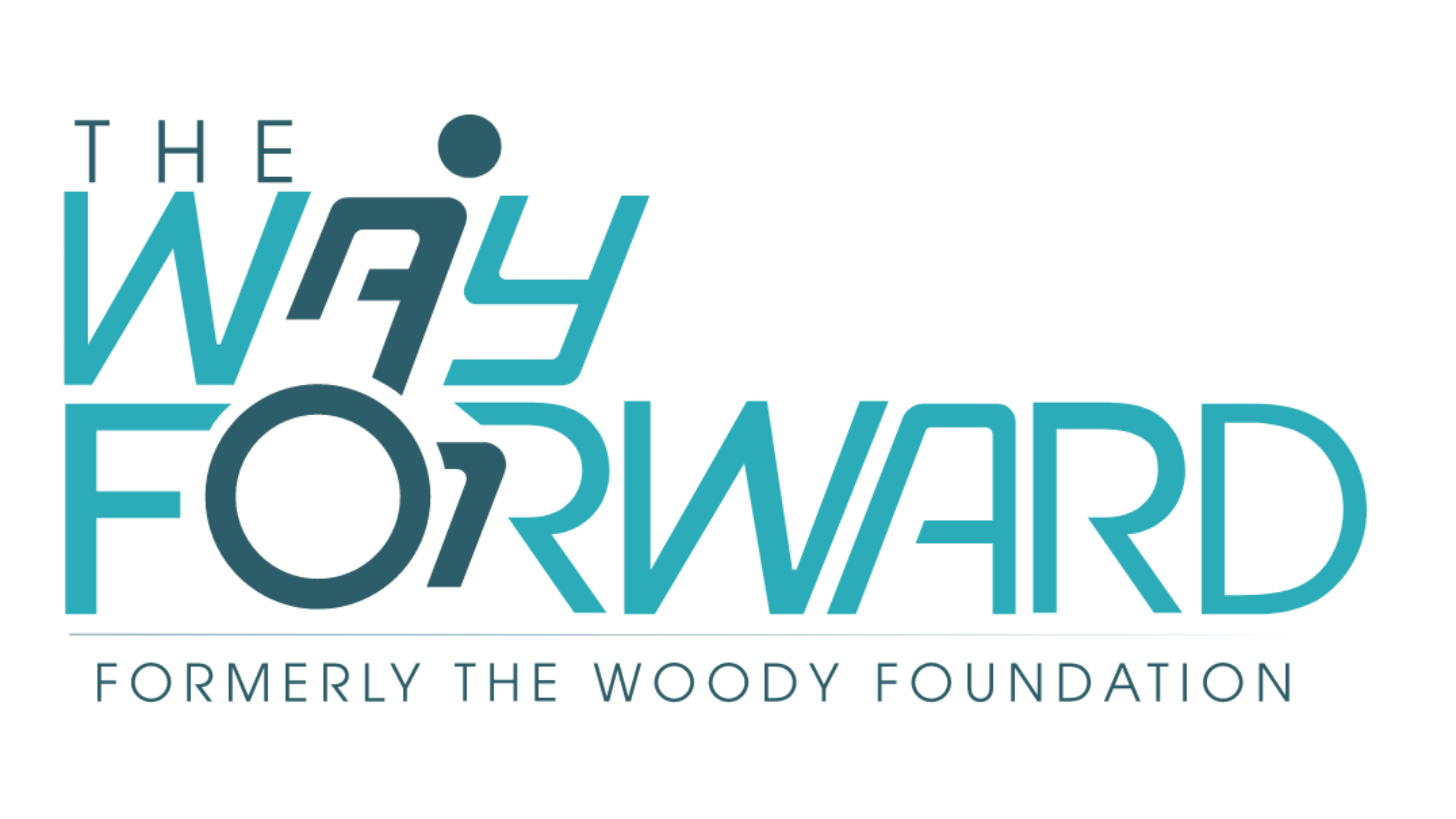
Quad 13 Grant by Jordan
This grant is to help quadriplegics cover the rising costs of physical therapy. It is something that our friend Jordan has been wanting to do after seeing how much PT has helped him gain independence as well as navigate through a world that wasn’t built for people with limited function. His goal is to help people in similar circumstances regain as much function, freedom, and independence as possible.
Significance of ‘Quad 13’:
After someone suffers a life changing injury, individuals tend to try to find comfort in something or someone. As a Christian, Jordan leaned on his faith for comfort. The Bible verse Philippians 4:13, “For I can do all things through Christ, who strengthens me" helped shape his journey. Since the word quad refers to the number four, he decided to have a play on words that resonated with the meaning of the grant along with the biblical verse.
Note: No religious affiliation is required to qualify.
QUAD 13 GRANT BY JORDAN
About Jordan Almendral
July 11, 2010, was the day my life and that of my families' lives, were forever changed. It was an ordinary day, and I was doing what any 17-year-old does the summer before their senior year of high school, enjoying a party with my friends. We were enjoying life and each other’s company as an acquaintance from another school drove us home in his large suburban. I was sitting in the last row when the driver of our vehicle miscalculated and made a left turn onto an incoming car. I was immediately ejected by the force of the collision.
The force from hitting my head on the pavement sent me into an immediate coma. A medical helicopter took me from the accident scene to Jackson Memorial Hospital (JMH). It was then, that doctors diagnosed me with a Traumatic Brain Injury (TBI), as well as a Spinal Cord Injury (SCI). I had suffered C3-C6 contusions with a burst C5 vertebrae. My C4-C6 were fused with an interbody graph. My parents had to make an unimaginable decision on whether to operate on my spine (giving me the chance to perhaps walk again), or my brain, first. (Because what’s the point of walking, if I don’t have any brain function?) My body would not survive both surgeries at the same time. Ultimately, my parents asked the doctors to save my life and operate on my brain.
The neurosurgeons performed a craniectomy, which means they removed the bone flap from my skull to reduce swelling and inflammation. One week later, they operated on my C5 vertebrae. The surgeries were a success, but I wouldn’t wake up from my coma until six weeks later. And it’s important for me to note that waking up from a coma is a slow process. It’s not like the movies where it’s a sudden awakening.
Once I was awake, I immediately began physical therapy. I recall being confused of where I was and being unable to feel my hands and legs. The next three months were going to be crucial to my recovery. My parents made the decision to send me to one of the best rehabilitation centers in the US. The Shepherd Center, in Atlanta, GA. They specialize in SCI and TBI. This is where my Mom and I spent the next six weeks. This was a very dark time for my family and for me. Recovery was slow, and there were still so many questions and unknowns about what my recovery would entail and what function I could regain. After my six weeks at The Shepherd Center were complete, I finally returned home to Miami where I immediately began speech, occupational, and physical outpatient therapy three times a week at Health South Rehabilitation Hospital, now known as Encompass Health Corp.
In January 2011, my neurosurgeon put back the bone flap that had been removed from my head and frozen. This is the first time I remember feeling like myself again. From this point on, I told myself that the accident had already taken enough from me, I wouldn’t let it take or deprive me of anything else.
Returning home brought many challenges, but it gave my family and me time together to reflect, heal and build strength for the future. I watched my friends graduate from high school in the summer, and I was determined to the do the same. I enrolled in a homeschooling program in the spring of 2012, and I graduated with my high school degree. That summer, I enrolled in Florida International University. I was nervous to be on my own and maneuver through the halls by myself and ask strangers to push the wheelchair door opener when it didn’t work. But I found that most people are happy and willing to help, and that I was more independent than I thought.
As a former athlete, I was a pitcher for Columbus varsity baseball team, working out was always a part of my daily routine. I’m happy that this hasn’t changed, with physical therapy being a weekly activity for me. When I wasn’t in school, I was in physical therapy. If I had class in the mornings, I’d go to therapy in the afternoon, and vice versa. In April of 2012 I took my PT journey to Miami Physical Therapy Associates (MPTA). This is the facility and physical therapist that I credit most for my recovery. Getting me from a manual hospital chair to a power chair, that gave me independence; helping me detach my arms from my chest due to tightness (by recommending Botox) in different muscles; standing me up, for the first time in almost two years, and much more.
With an interest in different facilities that offer different forms of physical therapy, I have also been going to I Am Able and Youth ‘n Action for the last six years where I do physical therapy. At times, I end up dividing my weekdays between the three facilities. Staying active is key for me, and one of the reasons I feel physically healthy.
One of my biggest accomplishments to date, was graduating from FIU in 2018, with a Bachelor Degree in Psychology. I haven’t been in a hurry to find employment, as I still want to continue gaining strength and building on my independence. My family has been my rock, and the best support system anyone could ask for.
In 2020, I set a new goal for myself...to get my driver’s license. I took a special driving class to prepare me for the test. At the time, being back behind the wheel of a car triggered some mental emotions I didn’t know existed, and anxiety got the best of me. After seeking a counselor for help, I decided to try again in 2022. I’m proud to say that I received my driver’s license in September after passing the driver’s test.
You can put an athlete on the sideline, but you can’t keep him off the field. In May of 2019, I did the Wings For Life World Run 5K marathon. Their philanthropy is to raise money for Spinal Cord Injury research. I Am Adaptive, a nonprofit foundation, sponsored me to do this run with them. In the last three years I have also competed in three adaptive fitness competitions that really brought out the competitive nature I had burning inside!
Today, I’m still finding ways to stay involved with my passion for sports as well as get involved with the spinal cord injury community more. Since I can no longer physically play baseball the way I used to, I have been focusing on sharing my story and giving motivational speeches to teams and athletes. I’ve had the opportunity to return to my high school and speak to several teams, as well as other schools within Miami-Dade. I hope that hearing my story can allow them to reflect on how precious life is, and to make the most of their opportunities while they have them. Sitting here today, I can vouch that doing physical therapy has allowed me to live a better life as well as become much more active.
We only have this one life to live, let’s live it to the fullest.
Timeline, Explanation of Rolling Admissions and Deadlines
- Open applications will begin Jan 1
- 2024 deadlines: Feb 1, May 1, Aug 1, Nov 1
- Applications that didn't get selected will auto-rollover for 1-year
- Applicants can only be selected once per 12-month period (they max out at 3 times grant selection)
Eligible Applicants
Individuals with quadriplegia or tetraplegia. Quadriplegic patients affected by paralysis in all four limbs. Must reside in the United States of America (preferably FL). Quadriplegics who also suffered brain or other injuries along with quadriplegia are eligible.
Physical therapy has become more than just a means of rehabilitation for me. Through physical therapy I have met some of my best friends today, some patients, some therapist. Going from needing someone to feed me my daily meals to being able to feed myself, calling for someone to hand me things such as a tablet or remote control to being able to pick them up on my own, as far as being able to write my own papers (using a touchscreen tablet) for college by myself and more thanks to physical therapy. The improvements in my balance, movement and overall function have been life-changing.
Who Should Apply:
Individuals who are quadriplegics that have exhausted their Brain & Spine, Insurance visits (if applicable), or any other government funded programs. Patients who are looking to become stronger, more independent, and improve their overall well-being. Must believe in physical therapy and have a positive outlook on the results.
Notes & Requirements
Meeting eligibility requirements is not a guarantee of a grant award.
Requirements: Once you have submitted an application, please email the below required documents to info@woodyfoundation.org. Please include your first and last name in the email.
Part 1: Documentation of Paralysis
A letter on the letterhead of a treating physician or primary care provider.
Part 2: Personal Recommendation
A recommendation from a therapist that can speak on how this program will affect your life.
Part 3: Financial Need Statement
Provide a statement that showcases the financial need for physical therapy.
Part 4: Personal Statement
What are some of the goals that you would like to accomplish through physical therapy? What is one thing that you would like to do most independently? (700 -750 words)
